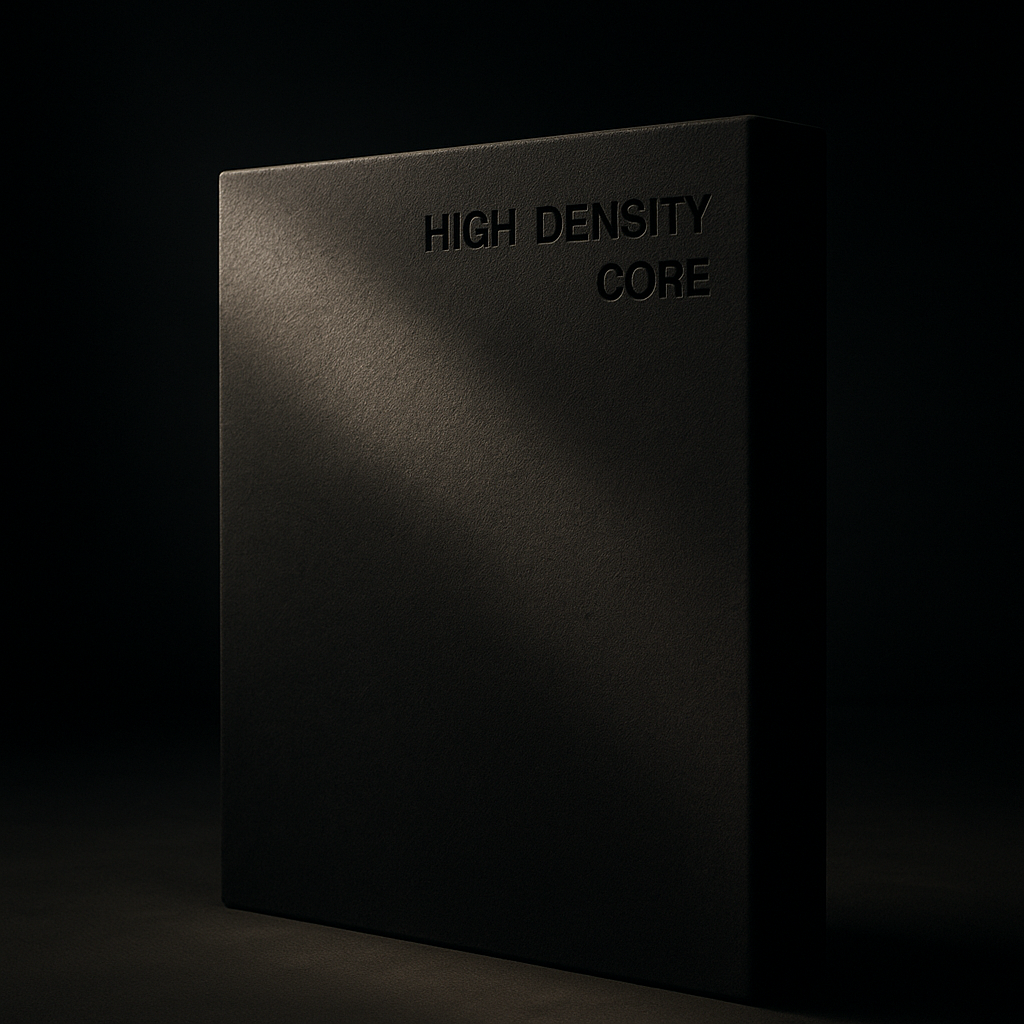When it comes to acoustic treatment, we often hear the same assumptions: "You need 4 inches of rockwool to make a difference." Or, "That panel looks too thin to absorb bass."
But in real-world acoustics, thickness is only one piece of the puzzle. The full story involves density, material behavior, and something lesser known but incredibly important: porous flow resistivity.
Let’s break down this trinity — and why a slimmer, denser, better-designed panel can outperform bulkier solutions.

About Thickness
Myth vs. Reality: Not Just About Thickness
| What People Say | What Actually Matters |
|---|---|
| “It’s only 2 inches thick — that won’t do much.” | Thickness isn’t everything. Our 207 kg/m³ PET core + strategic airgap design absorbs low frequencies better than many 4" rockwool setups. |
| “You need 4” panels for real bass control.” | That’s true only with lower-density materials. Our panel’s density and structure make it perform like something much thicker. |
| “PET isn’t serious acoustic material.” | Ours is architectural-grade, non-shedding, and thermally bonded — engineered for full-range clarity and stability. |
| “Thicker = better.” | Not necessarily. A smartly placed airgap behind a high-density panel can outperform bulky materials while looking better in your space. |
About Density
How Our Panels Compare Density-Wise
| Material | Density (kg/m³) | Use Case |
| Massform Panel | 207 | Full-range control, refined presence. Ideal for studios, homes, and design-conscious spaces |
| Acoustic Foam (PU/Melamine) | 15–35 | Lightweight, mid-high absorption only |
| Owens Corning 703 | ~48 | Broadband absorber; studio standard |
| Owens Corning 705 | ~96 | Better low-end control |
| Pink Insulation Batt | 16–24 | Basic absorption, not acoustically tuned |
| Rockwool / Mineral Wool (Rigid Board) | 40–150 | Widely used in bass traps, but performance varies by density and construction |
About Porous Flow Resistivity
Not all dense materials behave the same.
How a material absorbs sound isn’t just about density — it’s about how air moves through it. That’s where fiber structure and porous flow resistivity come in.
What Is Porous Flow Resistivity?
When sound enters a porous material, it doesn’t just bounce — it travels through microscopic pathways filled with air. As it does, air molecules rub against the fiber walls, and that internal friction converts sound energy into heat.
This process depends on:
-
Open-cell microstructure — lets sound in
-
Fiber arrangement and density — increases resistance
-
Porous flow resistivity — determines how effectively energy is dissipated
Why Massform PET Performs So Well
PET (polyethylene terephthalate), when thermally bonded and compressed, forms a highly controlled internal structure. Unlike loose-fill or fragile materials, it offers:
- A clean, sculptural surface with high airflow resistivity
- No shedding or breakdown over time
- A dense core with real bass absorption power — even in slim profiles
That’s why two panels with the same thickness and density can behave very differently in practice.
Why Massform Feels Different
| Feature | Massform Panels | Rockwool / Fiberglass |
| Visual Design | Sculptural, clean finish | Needs to be hidden |
| Touch & Feel | Dense, solid, non-fibrous | Fragile, crumbly, often dusty |
| Low-End Control | Built-in airgap + dense core | Often needs extra thickness or framing |
| Surface Material | Thermally bonded PET | Exposed or wrapped in fabric |
| Placement | Ready for living rooms, studios, galleries | Mostly utility or hidden installs |
More Than Specs
✅ Low-frequency absorption without bulk
✅ High-density core tuned for clarity
✅ Porous flow resistivity that maximizes internal air friction
✅ Design that belongs in your space
In the end, great acoustic design is not about adding inches. It’s about combining the right materials, the right density, and smart internal structure to shape how a room sounds and feels.
If you’re ready to hear and feel the difference, browse our collection here.














Share:
Beyond the Specs: How to Read a 1/3 Octave Chart (Without Losing Your Mind)
Wave & Surge: Two Expressions of the Same Motion